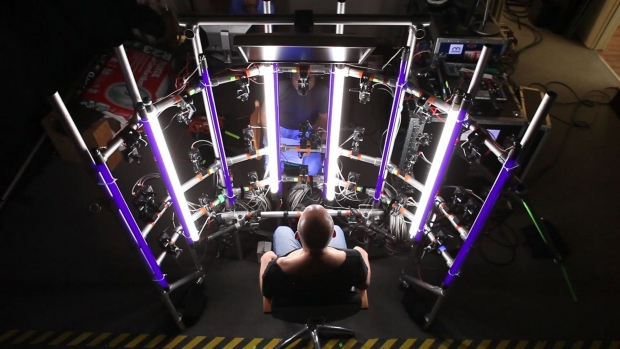After over six years of litigation, an Oakland jury has awarded roughly $600,000 to Reardon’s Oscar-winning VFX software MOVA Contour, with a paltry $345,000 meant to represent the profits gained from the wrongful use of assets.
After over six years of litigation, an Oakland jury has found that Disney infringed upon the intellectual property of Reardon’s Oscar-winning VFX software MOVA Contour Reality Capture by using copyrighted tech to make Guardians of the Galaxy (2014), Beauty and the Beast (2017), and multiple Avengers installments, according to The Hollywood Reporter. On summary judgment, claims for contributory and trademark infringement were dismissed. Judge Jon Tigar found that Disney “did not know, or have reason to know, of DD3’s [Digital Domain 3.0] alleged infringement before the court held in 2017 that Rearden owned MOVA.”
The firm was awarded roughly $600,000 on Thursday, with a paltry $345,000 meant to represent the portion of profits gained from the wrongful use of MOVA Contour assets. Reardon originally requested over $100 million in damages, attributing the films’ box-office success wholly to the technology, but the jury ultimately disagreed.
The intellectual property lawsuit was originally filed July 17, 2017, and alleged that Disney knew the proprietary technology used was owned by Rearden LLC and Rearden Mova LLC, and that the company supplying the technology had stolen it from a secured storage facility. A week later, the lawsuit was expanded to include Twentieth Century Fox, Paramount Pictures, and Crystal Dynamics, the producer and distributor of the Rise of the Tomb Raider video game, accusing them of using stolen technology and infringing copyrights, trademarks and other intellectual property in blockbusters Deadpool and Terminator: Genisys and the critically-acclaimed video game Rise of the Tomb Raider. You can read the full original complaint here.
The MOVA Contour technology at the core of the lawsuit has been used in films to capture some of the most subtle facial performances from actors such as Brad Pitt in The Curious Case of Benjamin Button; Jeff Bridges in Tron: Legacy; Mark Ruffalo as the Hulk in The Avengers; and Daniel Radcliff and Rupert Grint in Harry Potter and the Deathly Hallows, Parts 1 and 2, among many other blockbuster movies. The software output permits VFX studios to project captured facial performances onto CG faces, bringing the computer-generated characters to life.
Disney had contracted with Rearden to use the MOVA Contour system in four films as the owner of the MOVA Contour copyrights, patents, and other proprietary technology, which includes its patented computer program, arc-shaped Contour camera and lighting rig, synchronized cameras at multiple angles, and specially-mixed phosphor-based makeup used to capture thousands of control points on the actor’s face.
In 2012, Rearden employee Greg LaSalle allegedly began secret negotiations with DD3 to sell the MOVA Contour system for his personal enrichment, without Rearden’s knowledge. LaSalle had reportedly also secretly offered the MOVA Contour technology in March 2013 to Disney and its former Lucasfilm subsidiary Industrial Light and Magic.
Rearden wrote a cease-and-desist letter to LaSalle in March 2013, reasserting that it owned the MOVA Contour intellectual property, that LaSalle had taken it illegally, and that Rearden would take legal action if necessary. According to the complaint, LaSalle then notified interested parties including Disney and its Industrial Light and Magic division of Rearden’s claims, both of which swiftly dropped out of negotiations for MOVA Contour.
A core issue of the litigation has been whether or not the technology was legally acquired by Chinese holding company Shenzhenshi Haitiecheng Science and Technology Company, which at the time was closely tied to DD3. Shenzhenshi claimed to have bought the MOVA Contour technology and to have licensed it to DD3. In 2013, according to the lawsuit, “LaSalle had access to the secure storage facility where the physical MOVA Contour apparatus was kept, and assisted DD3 in taking the patented MOVA Contour physical apparatus and copies of the copyrighted Contour Program.” DD3 supposedly then began secretly offering MOVA Contour facial performance capture services to major motion picture studios and production companies, including the defendants. DD3, along with all other licensees, was blocked from using the technology in June 2016.








